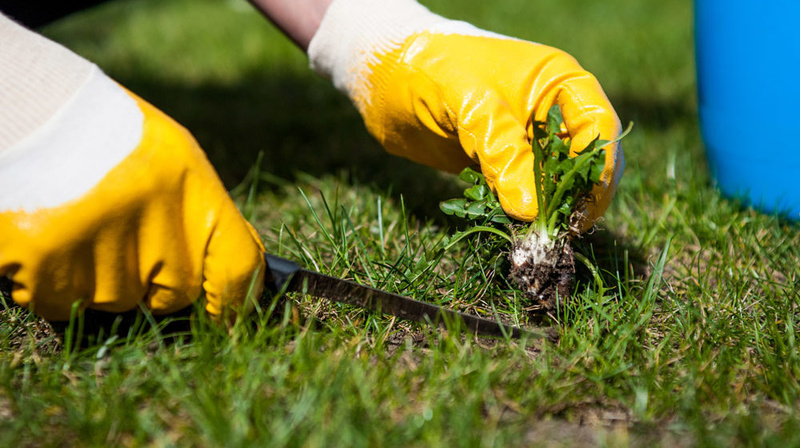
Manage Those Florida Weeds!
Are weeds in your landscaping driving you crazy? You’re not alone. Weed control is a perennial headache for many homeowners. Reliable weed management techniques include promoting healthy grass growth, mowing strategically, keeping bare ground covered, and removing whole weed root systems.
Weed management is a constant source of exasperation for many homeowners, and some eventually throw in the towel. If you feel like you’re engaged in a losing battle, take heart. There’s hope. This article will arm you with the proper information to combat those unwanted plants in your lawns and landscaping.
Dense Turf = Fewer Weeds
The old maxim that the best defense is a good offense might be applied to your weed management plan: maintaining a healthy lawn is a reliable preventative strategy.
Thick, healthy grass takes up more space than sickly turf with sparse blades that leave room in the soil for weeds. Thriving grass also soaks up sunlight and prevents those warm rays from nourishing weed seeds in the ground.
So, a few ways to encourage thick grass growth:
- Water precisely. Under- or overwatering compromises the soil and robs lawns of the nutrients they need.
- Keep soil appropriately loose. Compact ground prevents grass roots from developing but is fertile territory for weeds.
- Keep pests under control. Turf bugs damage grass and create space for opportunistic weeds to move in.
Mow Smarter
You may be surprised to learn how important good mowing habits are in minimizing weed growth.
Some homeowners prefer grass that resembles an Army buzzcut: extremely short on top and even shorter around the edges. Unfortunately, weeds love it, too. Remember that shade on the soil from grass blades hinders weed growth. Allow for adequate grass height.
Regular mowing is also necessary because it cuts down weeds before they grow tall enough to produce seeds heads and spread in that way.
Finally, take note of the order in which you mow sections of your yard. Start with the healthiest areas, then move on to any portions that have a weed problem. The idea is to not pick up weed seeds and disperse them across healthy grass. Clean off blades, edgers, and trimmers before doing yard work again next week.
Keep Bare Ground Covered
If you’ve read this far, you’ve probably picked up on the fact that weeds fill empty ground quickly, and that reducing this space is a simple and effective preventative measure. This principle extends to larger patches of soil that don’t have abundant plant life, whether it be newly cleared property or a bed that is in the process of being replanted.
If you don’t plan on filling this space quickly, consider spreading mulch, straw, or even newspaper held in place by grass clippings until you find a more permanent solution. Breathable sheeting is also available that allows nutrients to reach soil but discourages root systems from growing.
While this will require a little work, it’s easier than re-clearing soil that has been overtaken by unwanted plants.
Last Ditch Effort: Weeding by Hand
For any large lawn or garden, pulling weeds by hand is tedious and time-consuming. Still, you might resort to manual weeding in certain instances.
If you do, carefully remove the entire weed by grasping the stem as close to the ground as you can and gently easing the roots out of the soil. Snapping off a weed above its root system gets rid of the visible portion, but the roots will quickly produce a new weed plant. Weeds with strong, deep roots may require a trowel to fully remove the entire underground system.